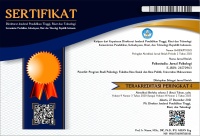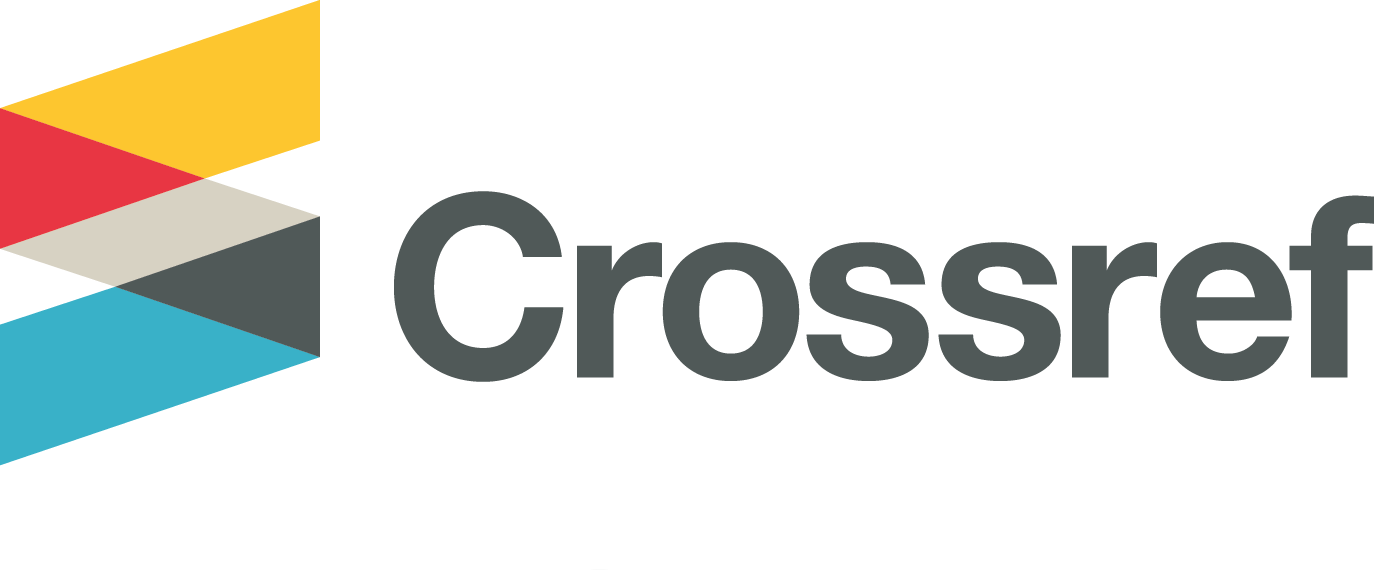Analysis of the Profile of Bullying Perpetrators
Abstract
Bullying dalam konteks pendidikan menimbulkan dampak serius pada kesejahteraan psikologis dan sosial korban, sambil menciptakan lingkungan belajar yang tidak aman. Meskipun telah banyak penelitian tentang bullying, terdapat kesenjangan dalam pemahaman tentang pelaku, khususnya dalam konteks pendidikan. Penelitian ini menggunakan metode Systematic Literature Review (SLR) untuk mengidentifikasi dan merangkum hasil penelitian sebelumnya mengenai profil pelaku bullying. Dari 11 artikel yang dianalisis, penelitian ini mengungkapkan berbagai faktor yang memengaruhi perilaku pelaku bullying, kurangnya empati, kemampuan empati yang rendah, dan kekurangan prosedur pencegahan di sekolah. Persepsi pelaku terhadap tindakan mereka, yang melibatkan aspek humor atau kepuasan diri, juga menjadi elemen penting yang perlu dipahami. Profil pelaku bullying mencakup karakteristik kepribadian, rendahnya kemampuan empati, serta masalah emosional seperti rasa marah dan kepuasan setelah melakukan tindakan bullying. Faktor eksternal seperti lingkungan keluarga, aktivitas waktu luang, dan kondisi emosi juga mempengaruhi perilaku pelaku. Penelitian ini memberikan wawasan tentang kompleksitas pelaku bullying dalam konteks pendidikan. Penelitian ini menyoroti pentingnya memahami dampak bullying pada semua pihak terlibat, dengan harapan dapat memberikan kontribusi signifikan untuk membangun lingkungan pendidikan yang aman, suportif, dan bebas dari perilaku bullying.
Keywords
Full Text:
FULL TEXTReferences
Bandura, A. (1986). Social foundations of thought and action: A social cognitive theory. National Inst of Mental Health.
Butar, B. H. S., & Karneli, Y. (2021). Persepsi Pelaku Terhadap Bullying dan Humor. EDUKATIF : JURNAL ILMU PENDIDIKAN, 4(1), 372–379. https://doi.org/10.31004/edukatif.v4i1.1843
Carroll, A., Houghton, S., Wood, R., Unsworth, K., Hattie, J., Gordon, L., & Bower, J. (2009). Self-efficacy and academic achievement in Australian high school students: The mediating effects of academic aspirations and delinquency. Journal of Adolescence, 32(4), 797–817. https://doi.org/10.1016/j.adolescence.2008.10.009
Cook, C. R., Williams, K., Guerra, N. G., & Kim, T. E. (2010). Predictors of Bullying and Victimization in Childhood and Adolescence: A Meta-analytic Investigation. School Psychology Quarterly, Vol. 25(No. 2), 65–83.
Dodaj, A. (2013). The effect of empathy on involving in bullying behavior. Paediatrics Today, 9(1), 91–101. https://doi.org/10.5457/p2005-114.66
Frandsen, T. F., Bruun Nielsen, M. F., Lindhardt, C. L., & Eriksen, M. B. (2020). Using the full PICO model as a search tool for systematic reviews resulted in lower recall for some PICO elements. Journal of Clinical Epidemiology, 127, 69–75. https://doi.org/10.1016/j.jclinepi.2020.07.005
Gottfredson, M. R., & Hirschi, T. (1990). A General Theory of Crime.
Heider, F. (1958). The Psychology of Interpersonal Relations.
Jayani, D. H. (2019, December 12). PISA: Murid Korban “Bully” di Indonesia Tertinggi Kelima di Dunia. Katadata Media Network.
Junita, Mamaseh, M., & Hidayat, D. R. (2020). KONDISI EMOSI PELAKU BULLYING (Studi Kasus Pada Siswa Kelas VIII di SMP DIPONEGORO 1 Jakarta). 57–63.
Masdin. (2013). FENOMENA BULLYING DALAM PENDIDIKAN. Vol. 6, 73–83.
Mintasrihadi, Kharis, A., & Aini, N. (2019). Dampak Bullying Terhadap Perilaku Remaja (Studi pada SMKN 5 Mataram). JIAP | Jurnal Ilmu Administrasi Publik, Vol. 7(No. 1), 44–55.
Olweus, D. A., Catalano, R., & Slee, P. T. (1999). The Nature of School Bullying: A Cross National Perspective. https://www.researchgate.net/publication/272160328
Page, M. J., Mckenzie, J. E., Bossuyt, P. M., Boutron, I., Hoffmann, C., Mulrow, C. D., Shamseer, L., Tetzlaff, J. M., Akl, E. A., Brennan, S. E., Chou, R., Glanville, J., Grimshaw, J. M., Hróbjartsson, A., Lalu, M. M., Li, T., Loder, E. W., Mayo-wilson, E., Mcdonald, S., … Moher, D. (2021). The PRISMA 2020 statement : an updated guideline for reporting systematic reviews Systematic reviews and Meta-Analyses. https://doi.org/10.1136/bmj.n71
Prasetyo, A. B. E. (2011). Bullying di Sekolah dan Dampaknya bagi Masa Depan Anak.
Rachmah, D. N. (2014). EMPATI PADA PELAKU BULLYING EMPATHY AT THE BULLIES. http://www.detik.com
Rahayu, B. A., & Permana, I. (2019). BULLYING DI SEKOLAH : KURANGNYA EMPATI PELAKU BUlLYING DAN PENCEGAHAN.
Rigby, K., & Graycar, A. (2003). Addressing Bullying in Schools: Theory and Practice in crime and criminal justice.
Rosa, N. (2023, December 31). Catatan Akhir Tahun Pendidikan 2023, FSGI: Kasus Bullying Meningkat. DetikEdu.
Salmivalli, C., & Voeten, M. (2004). Connections between attitudes, group norms , and behaviour in bullying situations. International Journal of Behavioral Development, 28(3), 246–258. https://doi.org/10.1080/01650250344000488
Shidiqi, M. F., & Suprapti, V. (2013). Pemaknaan Bullying pada Remaja Penindas (The Bully). In Jurnal Psikologi Kepribadian dan Sosial (Vol. 2, Issue 2).
Soebiartika, R., & Rindaningsih, I. (2023). Systematic Literature Review (SLR): Implementasi Sistim Kompensasi dan Penghargaan Terhadap Kinerja Guru SD Muhammadiyah Sidoarjo. MAMEN: Jurnal Manajemen, 2(1), 171–185. https://doi.org/10.55123/mamen.v2i1.1630
Sri Hertinjung, W., & Karyani, U. (2015). PROFIL PELAKU DAN KORBAN BULLYING DI SEKOLAH DASAR.
Sukmawati, I., Henryan Fenyara, A., Fadhilah, A., Kharin Herbawani, C., Studi Kesehatan Masyarakat, P., Ilmu Kesehatan Universitas Pembangunan Nasional Veteran Jakarta Jalan Rumah Sakit Fatmawati Raya, F., Labu, P., & Cilandak, K. (2021). DAMPAK BULLYING PADA ANAK DAN REMAJA TERHADAP KESEHATAN MENTAL.
Wahani, E. T., Isroini, S. P., & Setyawan, A. (2022). PENGARUH BULLYING TERHADAP KESEHATAN MENTAL REMAJA. EduCurio, vol.1(No. 1), 198–203.
Wulandari, A. W. (2017). KARAKTERISTIK PELAKU DAN KORBAN BULLYING DI SMA NEGERI 11 SURABAYA CHARACTERISTICS OF THE BULLIES AND THE VICTIMS OF BULLYING AT SENIOR HIGH SCHOOL 11 SURABAYA.
Zakiyah, E. Z., Humaedi, S., & Santoso, M. B. (2017). FAKTOR YANG MEMPENGARUHI REMAJA DALAM MELAKUKAN BULLYING OLEH (Vol. 4, Issue 2). http://repository.usu.ac.id
DOI: http://dx.doi.org/10.30872/psikostudia.v14i2.15625
Refbacks
- There are currently no refbacks.
Copyright (c) 2025 Crusita Widya Anggraeni, Nono Hery Yoenanto

This work is licensed under a Creative Commons Attribution-ShareAlike 4.0 International License.
Psikostudia: Jurnal Psikologi is indexed by :
PSIKOSTUDIA: Jurnal Psikologi Published by Faculty of Social and Political Siences, University of Mulawarman, Samarinda, East Kalimantan and This work is licensed under a Creative Commons Attribution-ShareAlike 4.0 International License.
_________________________________________
PSIKOSTUDIA: Jurnal Psikologi
Department of Psychology
Faculty of Social and Political Siences, University of Mulawarman
Jl. Muara Muntai Kampus Gn. Kelua Samarinda 75411
Phone: +62 813 35350368
E-Mail: psikostudia@fisip.unmul.ac.id




















